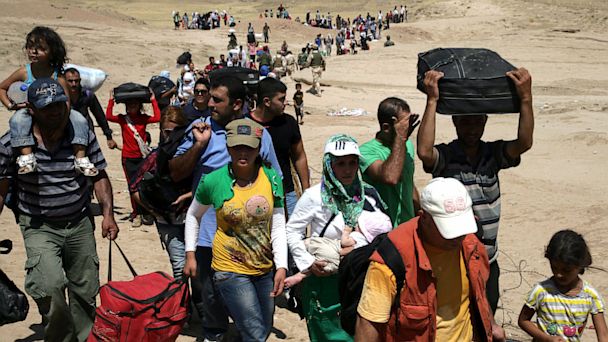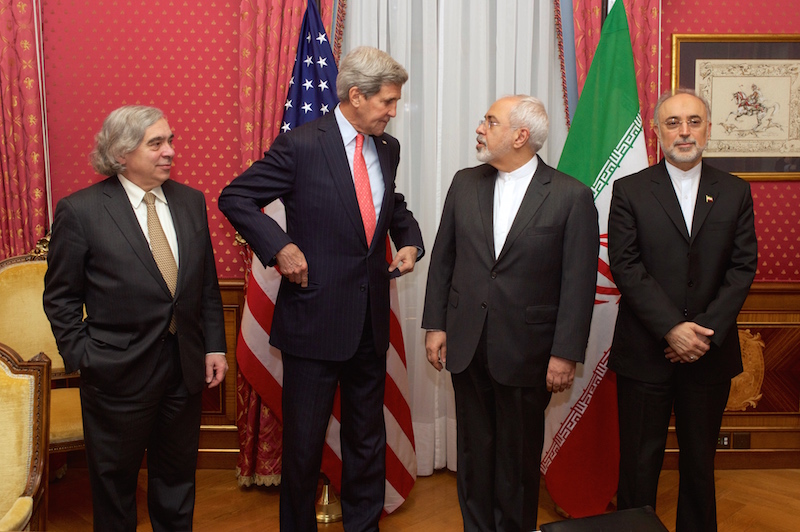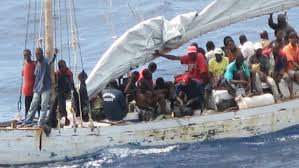As contemporary warfare is more diffuse and technologically advanced, which can destroy the interior of a country, refugees are inhibited from returning thus displacing them for a long period of time. Often, refugees flee to nearby camps for the purpose of seeking shelter.
A refugee camp is an institution that renders both refugees and host countries vulnerable to economic and security instability. Over the past year refugee camps have grown, sheltering an estimated 30,000 refugees worldwide and welcoming 2,000 refugees each day. Partly due to their growth and persistence, camps have formed distinct social and urban features, including mosques, internet cafes, and hospitals. Although daily life continues in refugee camps, such as celebrating marriages and giving birth on a daily basis (Born a Refugee), they are not sustainable for housing refugees and securing their livelihoods. As a consequence, economic and security issues begin to take a toll within camp walls and host countries.
[captionpix align=”left” theme=”elegant” width=”300″ imgsrc=”http://natoassociation.ca/wp-content/uploads/2013/11/syrian_refugee_4.jpg” captiontext=””]
Resident versus Refugee or Temporary versus Permanent
An analysis of the structure and population of the Zaatari Refugee Camp in Jordan makes it clear that some camps have become permanent residences rather than temporary homes for displaced people. The Zaatari Refugee Camp is the second largest camp in the world and the fourth largest city in Jordan. The issue is that camps are created without considering the long term needs of refugees. It is clear that camps are designed to be temporary; the political goal is to resolve conflict in war zones and return people back to their homes. However, current forms of warfare makes it much more difficult to re-stabilize these regions.
Camps without Long-Term Planning
The livelihood of residents is at stake because refugee camps are not sustainable forms of shelter. Camps are established in arid and deserted places, lacking adequate engineering. Alternatively, many camps end up being built in flood-prone areas. Also, inadequate water management leads to increased chances of infection and the spread of bacterial diseases. Further, refugees are not offered citizenship status and, therefore, cannot seek legal employment in the host country so they are forced to make their own financial arrangements.
In terms of security, camps are located in host countries, but are often placed on the country’s borders. The Zaatari Camp is located minutes away from the Syrian border; such positioning has a series of security issues. For example, terrorist organizations seek to establish their hegemony over small cities, and they are given the opportunity to do so when these refugee camps come into existence.
Canadian Aid
The Canadian government is committed to supporting refugees for the next three years by providing Jordan with over $110 million dollars to combat security and rebel threats. So far, Canada has pledged $100 million to help Jordan improve living conditions for refugees, as well as the country’s own economy. For Syrian refugees living in Egypt, Iraq, Lebanon, Turkey, and Jordan, Canada helps the World Food Programme (WFP) and the United Nations High Commissioner for Refugees with the allocation of food to 800,000 people, in addition to providing 1.7 million people with basic needs.
While these efforts are very generous, there should be more emphasis on the structure of refugee camps, and the overall living standards within camp walls. Given that wars can last for decades, humanitarian efforts not only need to provide a temporary solution, but a long-term solution that will give refugees comfort and safety. One possible change can be influenced by the ongoing debate in the western world that camps should be built along environmental lines. The refugee camp should be transformed into a green landscape so that it can essentially transform itself into an independent and self-sustainable environment.
In terms of security, a sustainable refugee camp will allow refugees to feel united, and will give refugees and host countries a reason to properly secure the camps. By ignoring growth and development, refugees will continue to impact host countries on a larger scale, as is evident in this video, titled refugees who prefer to live outside of camps.
With that said, Canadian initiatives should propose a more economical and innovative idea that encourages development in refugee camps.




